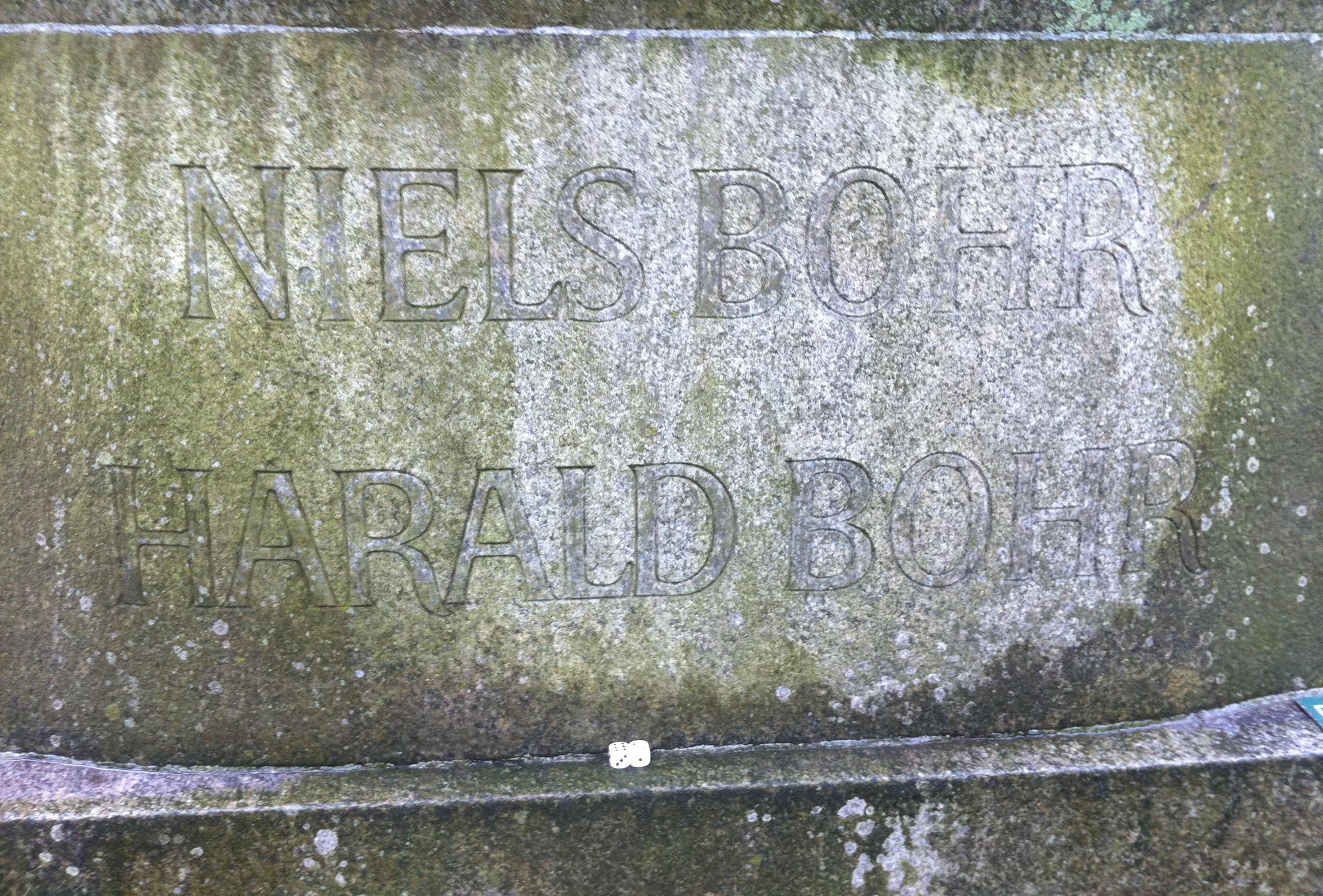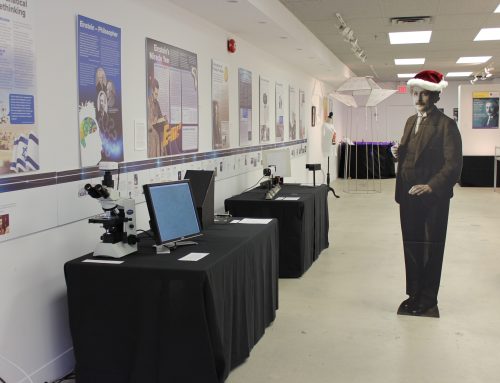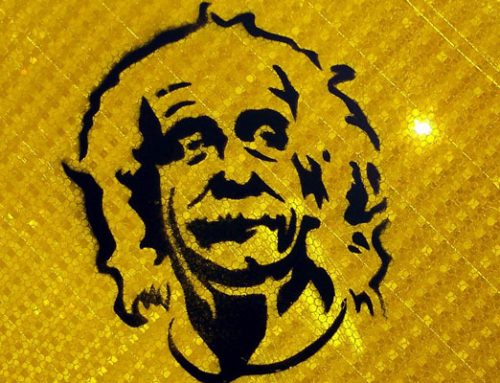by Lucas Dunlap
Einstein has become such a cultural touchstone that the internet is full of dubiously sourced quotations attributed to him. One of the most famous usually appears as “I refuse to believe that God plays dice with the universe”, or more simply “God doesn’t play dice”. This appears to be a paraphrase of the following remark Einstein made in a letter to Max Born in 1926:
“[Quantum Mechanics] says a lot, but does not really bring us any closer to the secret of the ‘old one’. I, at any rate, am convinced that He is not playing at dice.” (Letter to Born, December 1926)
This sentiment is usually taken as showing that Einstein was hostile to quantum theory. The history of his long debate with the other founders of quantum theory—especially Niels Bohr—is usually represented as an old man failing to come to terms with a radical new discovery about the quantum nature of reality. But this understanding of Einstein’s position on quantum theory misrepresents what he actually believed. The fuller context of the famous “dice” quotation gives us some clue:
“Quantum mechanics is certainly imposing. But an inner voice tells me that it is not yet the real thing. The theory says a lot, but does not really bring us any closer to the secret of the ‘old one’. I, at any rate, am convinced that He is not playing at dice.” (Letter to Born, December 1926)
As do his remarks from a lecture given in Oxford in 1930:
“I still believe in the possibility of reality, a theory, that is to say, which shall represent events themselves and not merely the probability of their occurrence.” (Oxford lecture, 1930).
What Einstein took issue with was the idea that quantum mechanics was a complete representation of the world. While he believed that quantum mechanics made accurate predictions, he didn’t believe that it was giving us the fullest picture of reality possible. Bohr, on the other hand, was convinced that quantum mechanics was a complete and final picture of reality, and so developed a philosophical position to support this. Bohr’s worldview was based on his principle of complementarity, which holds that “an inherent element of ambiguity is involved in assigning conventional physical attributes [such as position or momentum] to atomic objects.” (Bohr, “On the Notions of Causality and Complementarity”).
The idea that fundamental reality was such that the attribution of definite properties to subatomic entities is impossible was a bridge too far for Einstein. Over the years, he attempted many different avenues of attack against Bohr’s view of the completeness of quantum theory. His positions developed as more was learned. But he consistently held onto the hope that there could be a deeper theory that represented events in themselves, and that quantum mechanics would be seen as a statistical approximation to this final picture of reality. In the famous dice quotation, Einstein is expressing his dissatisfaction with the fact that quantum theory is indeterministic—it only makes probabilistic predictions. But he soon moved past indeterminism, and by 1935 had developed a deep critique of what he found to be problematic about the claim that quantum mechanics was complete. This argument, which was published in the famous EPR paper, focused on what has come to be called “nonlocality”. Einstein and his collaborators argued that quantum mechanics must be incomplete, since it seems to entail that an event in one location can have an instantaneous effect on another spatially separated system. For Einstein, this was an absurdity entailed taking the quantum formalism to be a complete representation of reality, which would be rectified by a deeper realist theory.
Ultimately, Einstein was proven wrong on this point. We now know that even if we develop a deeper theory to which quantum mechanics is a statistical approximation, it will need to include nonlocality. But if Einstein hadn’t pushed this point, by genuinely engaging with the most puzzling aspects of quantum theory, we likely would never have developed the depth of understanding we now have. And interestingly, many philosophers and physicists currently concerned with the foundations of quantum theory share with Einstein the view that Bohr’s philosophy of complementarity cannot be the final way to understand what quantum theory tells us about reality. Even though these contemporary ways of understanding the lessons of quantum theory contain some of the very elements that made Einstein uncomfortable (indeterminism, nonlocality), they share Einstein’s belief that whatever quantum mechanics tells us about the world, it must at least be comprehensible.
For more about the content of Einstein’s 1935 paper, see this previous Rotman Blog post by Professor Wayne Myrvold. For even more reading on the topic, see Prof. Myrvold’s personal blog for posts on Einstein’s feelings about quantum mechanics, and a three-part discussion of Bohr’s response to the EPR argument: Part I , Part II , Part III
Pictured above, a photo Lucas took of Bohr’s grave in Copenhagen — on which people routinely leave a pair of dice.
Dr. Lucas Dunlap is a Postdoctoral Fellow in the Rotman Institute of Philosophy. Learn more about his research interests here.
Please join us this week, as the Rotman Institute of Philosophy is host to Doreen Fraser for the third Einstein Library Talk, entitled Einstein, God, Dice, and Quantum Mechanics.






